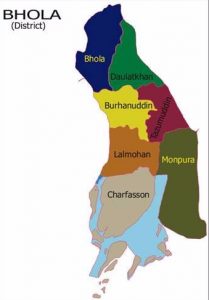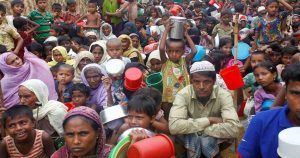The Unnayan Onneshan (UO) in its Bangladesh Economic update cautions that limited access to affordable and reliable sources of energy puts energy security at risk.
It says shortage of power supply, depletion of gas reserve and frequent price hikes in energy are not only exerting pressure on current production, but also posing a threat to energy security.According to the International Energy Agency, energy security is understood as uninterrupted supply of energy from available sources at a reasonable price with even distribution.
Referring to the consumption per capita and supply and demand, the UO states that the per capita energy consumption is very low in the country compared to the neighbouring countries and shortage of energy supply is demonstrated by the large mismatch between demand for and supply of energy.
In 2013, the per capita consumption of electricity was 217 kwh in Bangladesh, whereas the per capita consumption in India, Pakistan, Sri Lanka and Bhutan was 529.1 kwh, 368.38 kwh, 431.44 kwh, and 1619.48 kwh respectively.
As regards price, the research organisation says that the retail price of electricity in the country has undergone a seven-time hike during the period from 2010 to 2014.
Meanwhile, the Power Development Board has recently proposed an 18.12-percent increase in bulk electricity tariff to be effective from January 2015.
The UO observes that price of power increased by 124.52 percent, 83.67 percent, 75.53 percent, and 71.68 percent in the heavy industries (132 KV), heavy industries (33 KV), medium industries (11 KV), and commercial sector respectively during 2010 – 2014. In case of small industry and agriculture, electricity price has increased by 70.57 percent and 105.18 percent respectively during the same period.
Underscoring the reliable sources of energy in terms of uninterrupted supply and stable price, the think tank states that an energy source is considered reliable if it can be used to generate a consistent electrical output and is available to meet predicted peaks in demand. Reliability is, however, also related to the price fluctuation.
In May 2014, the maximum generation was 6293 MW against the peak demand of 7050 MW, whereas in September 2013, the maximum generation was 6844 MW against the peak demand of 6700 MW. The load shedding, therefore, was 551 MW and 932 MW in May 2014 and September 2103 respectively.
Increasing gap between installed capacity and maximum generation has been offsetting the possible benefits of increased installed capacity, although both installed capacity and maximum generation of power have been increasing. This gap resulted due mainly to poor productivity in the old power plants, shortage of gas supply and lack of proper maintenance and renovation of the power plants, says the research organisation.
In FY2008-2009, the gap between installed capacity and maximum generation was 1004 megawatts. The gap has nearly doubled within three years and become 2034 megawatts in FY2011-2012 (16.04 percent increase), 2175 megawatts (33.75 percent increase) in FY2012-2013, and 3271 megawatts (9.86 percent increase) in FY2013-2014 (until March 25, 2014). However, the target of increasing the generation to 8500 MW by 2013 set by the government has not been achieved.
UO further finds that the private sector comprised 49.99 percent of net power generation in FY 2013-14, whereas public sector comprised only 46.56 percent. The rest 3.45 percent of total generation is imported.
Referring to the energy poverty – lack of access to modern energy services such as electricity or gas – in the country, the think tank shows that about 59.204 million people that constitute 38 percent of total population in Bangladesh do not have electricity connection and only 8-10 percent households have access to piped gas.
Petrobangla has recently proposed to raise the prices of natural gas to Tk. 850 and Tk. 1000 for single burner and double burner respectively, whereas the present prices are Tk. 400 and Tk. 450 resulting 112.50 percent and 122.22 percent increase in price respectively. In industry, the proposed price will be increased to Tk. 220 from Tk. 165.91 – a 32.60 percent increase. Gas price will be increased by 102.94 percent to Tk. 240 from Tk. 118.26 in captive power.
System loss in both power and gas reflects the efficiency loss and in FY 2013-14, the transmission and distribution loss in electricity and gas was 13.75 percent and 20 percent respectively, UO finds.
Referring to the tiny contribution of the energy sector to gross domestic product (GDP), UO states that this is a sign of inconsequential development of power and energy infrastructure. From 1.51 percent in FY 2011-12, the contribution of power and energy to GDP stood at 1.55 percent in FY 2012-13, which remains the same for FY 2013-14.
The organisation also points out the falling rate of growth in power and gas production. In FY2010- 2011, the rate of growth in power was 15.82 percent which fell to 8.16 percent FY 2013-14; a decrease of 7.66 percentage points within three years. On the other hand, in FY 2011-12, the rate of growth in gas was 7.45 percent which fell to 1.71 percent in FY 2013-14; a 5.74-percentage-point decrease in two years.
Calling for a thorough rexamination of the current energy policies to address the structural bottlenecks, the UO draws attention of the authorities to encourage huge amount of investment in all sources of energy including in renewable resources – solar power, nuclear energy, and hydropower – which are more reliable and sustainable. – UNB




